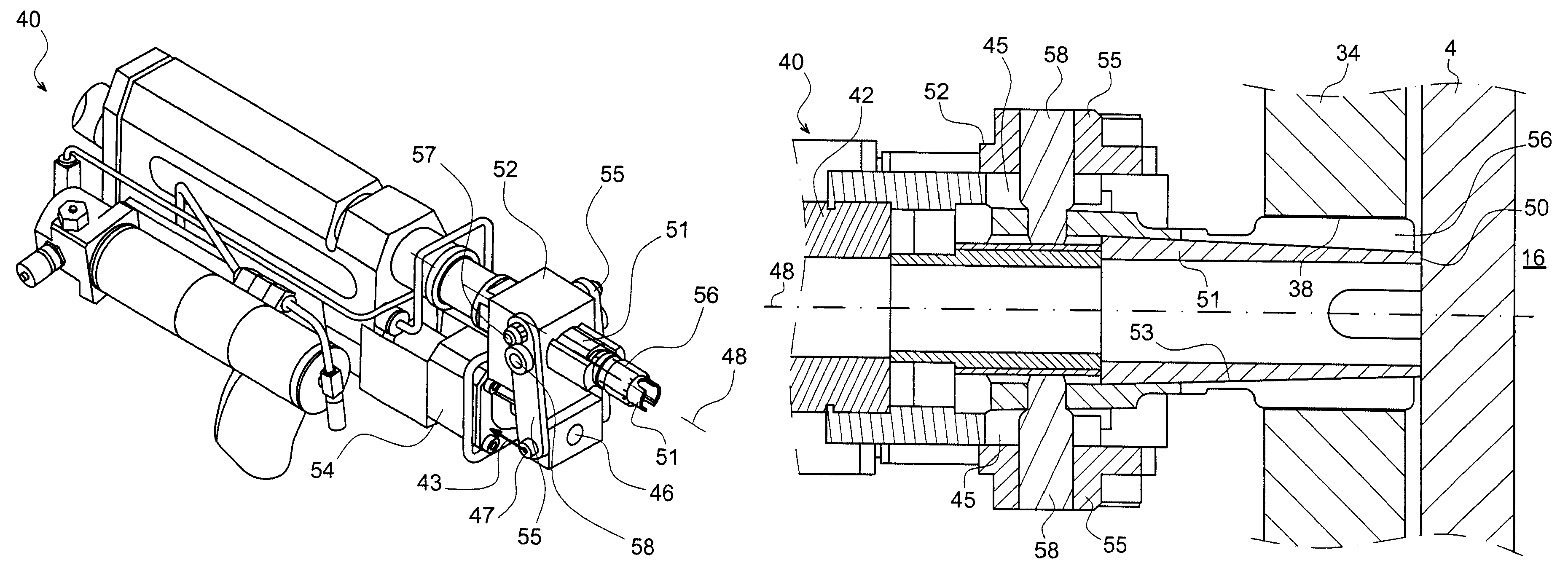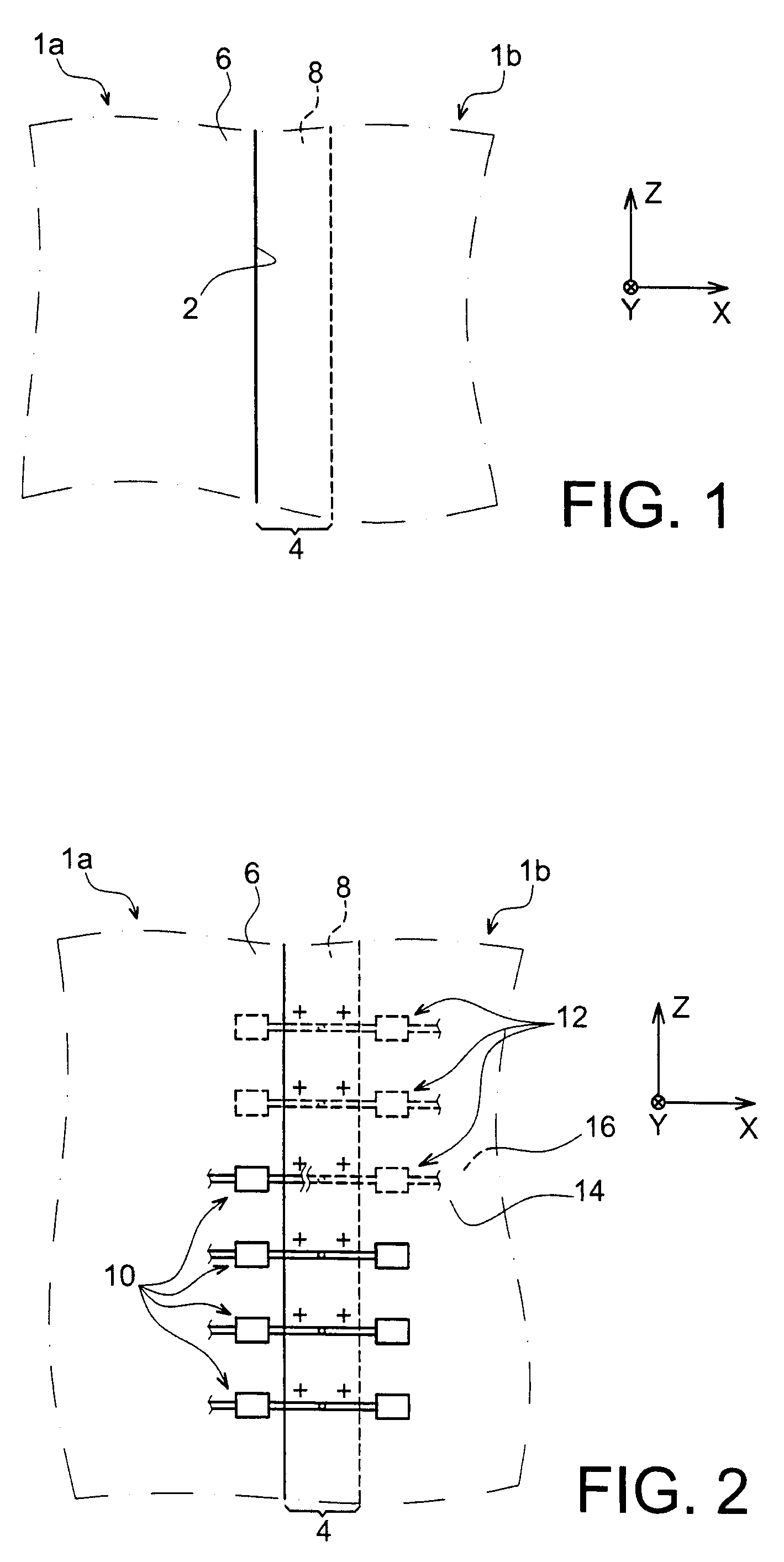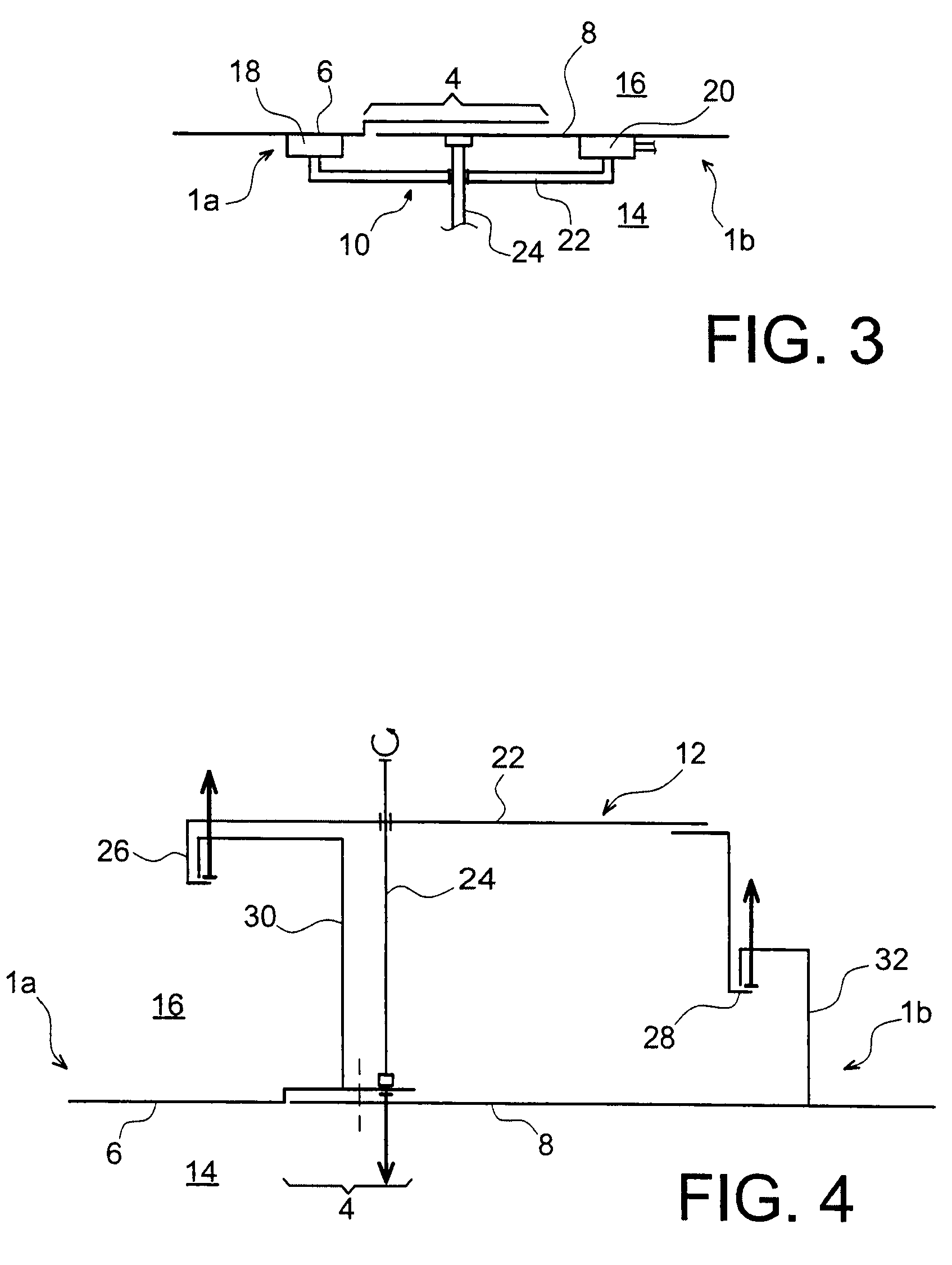Process for assembling two assemblies, such as aircraft fuselage assemblies
a technology for fuselage assemblies and assembly processes, which is applied in the direction of manufacturing tools, transportation and packaging, drilling/boring measurement devices, etc., can solve the problems of reduced fatigue strength characteristics of the fuselage assembled in this way, high cost, and inability to optimis
- Summary
- Abstract
- Description
- Claims
- Application Information
AI Technical Summary
Benefits of technology
Problems solved by technology
Method used
Image
Examples
Embodiment Construction
[0091]First of all with reference to FIG. 1, two assemblies 1a, 1b can be seen which are designed to be assembled by so-called orbital seams using rivets and by the implementation of a process according to a preferred means of implementation of the present invention, which will now be described. Here two assemblies 1a, 1b are involved which respectively form two transverse annular sections of an aircraft fuselage, preferably located at the front point or rear end of the aircraft, where the shape of the fuselage has double curvatures.
[0092]In this preferred option for implementation, the process starts, as shown in FIG. 1, with the reference positioning of the two assemblies 1a and 1b, intended to bring the latter together into a set relative position in the reference system of the aircraft, represented here by the references X, Y, Z. The reference positioning is such that it leads to the formation of an overlap zone 4, also known as the junction zone formed by the two panels 6, 8 wh...
PUM
| Property | Measurement | Unit |
|---|---|---|
| clamping force | aaaaa | aaaaa |
| clamping force | aaaaa | aaaaa |
| pressure force | aaaaa | aaaaa |
Abstract
Description
Claims
Application Information
 Login to View More
Login to View More - R&D
- Intellectual Property
- Life Sciences
- Materials
- Tech Scout
- Unparalleled Data Quality
- Higher Quality Content
- 60% Fewer Hallucinations
Browse by: Latest US Patents, China's latest patents, Technical Efficacy Thesaurus, Application Domain, Technology Topic, Popular Technical Reports.
© 2025 PatSnap. All rights reserved.Legal|Privacy policy|Modern Slavery Act Transparency Statement|Sitemap|About US| Contact US: help@patsnap.com



